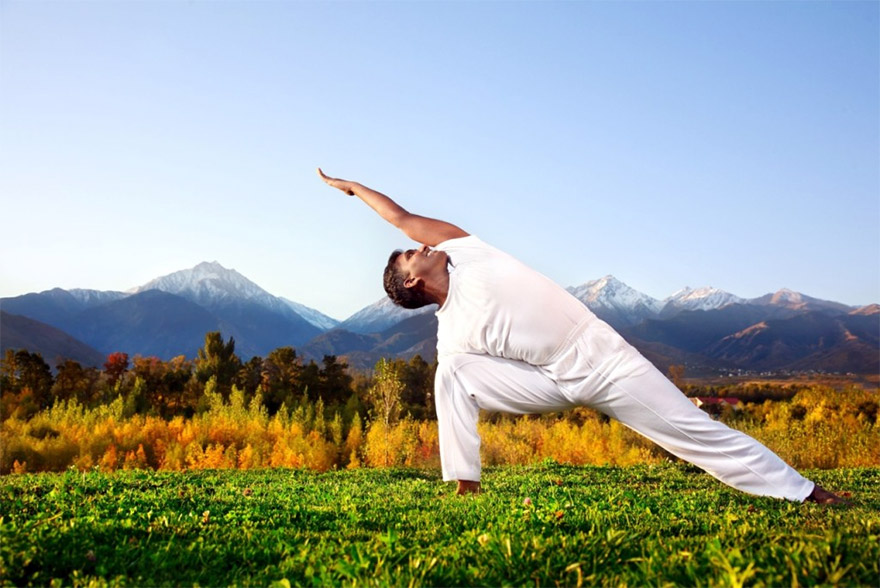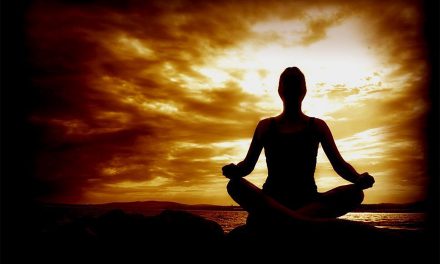Yoga in the current age is a broad spectrum of varying styles and approaches that converge on the philosophy of yuj or unity. By harmonizing different channels of energies in body and mind, yoga means to enhance consciousness and propel the practitioner towards a spiritually fulfilling life.
Being a discipline almost five thousand years old, yoga has evolved in multifarious ways, branching out into different practice methods. Some styles are dynamic and all about restoring energy and will to the core and others that which are slow-paced and restful.
[wp_ad_camp_1]
Let’s take a close look at 5 of the top yoga styles in the current age and whom these are suitable for:
Hatha Yoga for Introductory Level
Hatha yoga is understood as the groundwork for all types of asana exercises. Composed of basic and bold strokes, hatha solidifies one’s primary asana attitude and allows the body to relax and loosen up without breaking a sweat. In its traditional connotation, hatha is the discipline for aligning the “sun and moon” of one’s disposition, both physically and psychically. Being a generic category, Hatha is inclusive of all other types of yoga. Undergoing training in this one will let you absorb yoga’s purifying energy through a slow-paced exercise and stealth you for engaged practices of the more dynamic yoga versions.
The famous Sun Salutation series forms a major portion of the Hatha schedule, rich in physical benefits, effective for mental peace and stability, as well as introspective spiritual insight.
Ashtanga for Dynamic Core Exercise
To go a notch up in ladder of yoga prowess, you must choose Ashtanga. This eightfold discipline has its roots in Patanjali’s Sutras and has been reformulated by great yoga luminaries of modern India like Shri Pattabhi Jois and the grand master, Shri Krishnamacharya. Encapsulating a number of moral and ethical standpoints, Ashtanga yoga is designed to lead the practitioner on the path of righteous living.
In terms of physical exercise, Ashtanga is thoroughly dynamic. As per convention, training in this yoga style follows the standardized series of primary and intermediate Ashtanga asanas. The postures, unlike in Hatha, are connected in a dynamic sequence. The challenge is to get through the motions without taking a break. The relentless stress executed through performing an Ashtanga series results in core strengthening and cardiovascular power. BY integrating breath intensification with pranayama in the practice, you would be reaping the most benefits of Ashtanga. This one is surely a practice for stronger yoga souls, though not necessarily restricted to beginners.
Kundalini for Harnessing Chakra Power
This yoga discipline is centered around the concept of latent female energy concentrated at the base of the spine. The energies of Kundalini are depicted through chakras. This is a more spiritually uplifting exercise than most other styles of yoga. A typical Kundalini routine integrates movement, dynamic breathing techniques, meditation, and power of mantra chanting. Harnessing internal spiritual vigor through mantras like Sat Nam(implying: “truth is my identity”) is among the unique highlights of Kundalini. To build psychical strength and physical vitality with a heightened consciousness is the main aim of Kundalini yogic exercise. Intensified breath with a drive for cerebral balance makes Kundalini yoga more of a inner exercise than a body-movement based concept. Another important characteristic of Kundalini as practiced is its rapid and repetitive sequences. Word of advice, Kundalinin must not be tried out intensively without a prior introduction to the more movement oriented yoga forms.
Hot Yoga for Intensive Heat Generation
Hot Yoga, also popularized as Bikram yoga is meant to be performed in a heated room of temperature 95-100 degree Fahrenheit. To promote greater flexibility, the heat is meant to loosen the muscles. The general humidity level at a hot yoga session is kept to 40% and though suspected slightly uncomfortable, this yoga is still popular for weight loss purpose.
Bikram yoga is actually a subcategory of hot yoga which came to be formulated into a sequence of 26 postures by Bikram Choudhury – a revered yoga luminary. Before you sign up for hot yoga or its Bikram variation of sequences, collect props and accessories to endure through a session during which you are going to sweat a bucket load.
Restorative Yoga for Calming Frayed Nerves
This yoga type is designed especially for relaxation after rough hours. To fill your heart with a fresh breath of positive energy following strenuous times, restorative yoga will come in super handy. The postures featured in restorative yoga are mostly passive. The body can naturally flow into the postures with ease without having to endure stress at specific parts. Props like blankets, blocks, and bolsters are utilized in a restorative class to ensure complete calm for frayed nerves. Ideally, an hour of restorative yoga could be more relaxing than a night of sleep. Friday nights or any workday evening is recommended for restorative.
Now that you have an inkling about all the popular forms, pick a training in a specific one that suits you perfectly or go for an integrative course in multiple yoga styles. Bring in happy yoga hours in your life today!
Author’s website: 200hrsyogattc.com













For people like me who have no idea of yoga (physical form) , this article seems very high level. Need more clarity
The very meaning of yogam is the union of the individual consciousness
and the Absolute consciousness/Universal consciousness. We draw Prana Sakti
from Sun the intake of food ,water ,air etc. This Prana Sakti is divided in to five parts
and charge the five batteries(Pancha Pranmulu) which in turn charge the five sense
organs and the body due to Eswara/Atma Sakti. . Apart from the above five parts of energy
one more part subtle part is also formed within the body and it feeds the mind.As mind is
infected with the virus as desire , mind lives in the worldly matters, worldly objects and the
sensual pleasures. Mind experiences the worldly pleasures/pains through the sense organs
which act as the interfaces while connecting the mind with the world. thus the Prana Sakti derived
from food, and water and air etc escapes out in to the world.
As happiness is a state of mind we woud never be able to draw perfect happiness from
the external world. Apart from this sensual pleasures are temporary and end up with
misery,sorrow and frustration. The reason being they carry in built defects and more over they are
subjected to change as time passes.
Keeping in view the above mentioned hard facts , a seeker having an urge for perfect
happiness and peace starts moving inwards. Yogam is a process through which one draws happiness
from Eswara/Atma in the form of Ananda Rupam. The seeker withdraws inwards the six types of energy
which is going out as waste through five sense organs and their boss mind inwards and integrates them
in to one and directs it to through Buddi(intellect) to Eswara(Atma). As a result of this Intellect
embraces Eswara(Sat/Ekam). When Buddi becomes one with Sat, the ignorance in us in the form of
Dehaatma Bhavam ( identification of house as the hose holder) is driven away from Buddi(intellect)
Thus when seven forms of energy saved are integrated in to one and that is sunlight which signifies
Absolute/Universal knowledge and the individual consciousness becomes one with the Absolute consciousness/
Universal consciousness. As sunlight and its source Sun are inseparable, the seeker practicing Yoga
would under go spiritual bliss in the form of perfect happiness(Atma Ananadam) .
Dear Sir,
I have some personal opinion. I have get many Spiritual Knowledge through your website. But today, i disappointed with this post (5-popular-types-yoga-suitable). In Spiritual aspect, Yog is one, not many. But there are some types (karma, bhakthi, ngyana, kriya) through which we can attain or walk in the Path of yog. There are many stages and many practices for Yog. but Yog is one. Please make it clear. Peoples dont have idea what is yog exactly. Poeple misunderstood yog actually. So the right person should teach or direct in right way. We should take them away from truth. If my words are rude, really sorry. Please consider my words.
Thanks
Kundalini and Hot Yoga new ageisms. Yoga itself will warm you, “hot” yoga is unnatural and not needed .it did make Bikram wealthy though. Yoga engages the Kundal anyway, the new Kundalini is a blend of other yoga systems such as kriya created in the early 1900’s by a Sikh who has turned this yoga into a cult like enterprise of elitests. I am disappointed in this article which is not up to the usual standard of this organization .
Veda states that two birds sitting in different branches of a treee one of them eats fruits of the tree where the other one just observes the former bird and expects the former bird to feed the other bird also waits for the former to feeds latter. ; DWA SUPARNAA SAYUJAA SAKHAAYA SAMAANAM VRUKSHAM PARISHASWAJAATHE. TAYOHO ANYAM SWAADATTI ANANSHNAN ABHICHAAKASITHI. THE TOW BIRDS REFERRED ARE ONE IS BODY PERFORMING THROUGH MIND AND SECOND NE IS SOUL/ATMA/BRAHMA. BOTH ARE FLYINGNATURE.WE SAY MIND IS FLYING FRM ONE THING TO OTHER. SO ALSO THE ATMA I OF FLYING NATURE IE FROM ONE BODY TO ANOTHER. AS PER SANATHANA DHARMA THE FOOD RECEIVED BY THE BODY IS CONVERTED TO RASA RAKTHA MAMSA MAJJA ASTHI MEDHA LASTLY DHAATHU IE SHUKLA AND SHONITHA. THESE 7TH ITEMS THE ESSENCE OF THE FOOD IS BESTOVED FOR HAKE CONTINUING PROJENY AND AT THE AT THE SAME TIME TRANSFER/ TRANSMUTATION /SUBLIMATION OF THE SAME TO THE SOUL/ATMA THEN TO SAHASRARA ON THE TOP OF HEAD CONVERTS THE MAN TO RISHI/ A DRUSTARA AND PERSON WITH FULL KNOWLEDGE OF VEDA VEDA ETC AND HE IS PARALLEL TO PARAMATMA HE CAN IF WISH CAN MERGE WITH PARAMATMA AN BECOME THE ABSOLUTE OR THE CREATOR AND CAN RELEASE TE BODY AT IS WISH/DESIRE .HE IS A ICHHA MARANI. THE MAIN AIM/GOAL OF THE MAN IS TO GO AND RESIDE FROM WHERE HE HAS COME TO THIS WORLD. TO GO AND RESIDE IN HIS OWN ABODE. OR ORIGINAL HOUSE IS PARAMDHAMA. YATHA PINDANDE TATHA BAHMANDE TATHA ANDANDE. AS IS MACROCOSM SO IS MICROCOSM AND ALSO MINIMICROCOSM./ANDANDA. THE 7TH DHATHU THE SEMEN OR TEJAS IS STORED IN MOOLADHARA AND BY TAPAS/WITH GREEVA PRANAYAMA HEATED CONVERTS TO FIRE THEN IF FURTHER HEATING CONVERTS TO LIGHT WITH LIMITED VELOCITY TRAVELS TO ATMA. THE MAN BECOMES BRAHMANA. FURTHER JOURNEY IS THROUGH CHAKRAS IS FROM SWADHISTANA/ATMA STHAANA TO MANPUR , ANAHATHA VISHUDDHI AND AJNACHAKRA THESE MARGA OR PATHA IS ABOVE ATMA STAGE IS CALL PARABRAHMA MARGA , AND TAPAS AND SADHANA IS ONCE GURU AND BY THIS ANUSTAN THE ANNARASA WHICH AS CONVERTED TO SEMEN AND LIGHT OF THE BODY IN ATMA IE TAMASOMA JYOTHIRGAMAYA. BODY/MATTER IS DARKA OR TAMAS WHEN THROUGH TAPASYA COMES T ATMA IS FULL OF LIGHT OR JYOTHI OR JNANA FURTHER MOVES IN THE SAHASRARA DIRECTION IN THE CHAKRAS THROUGH SUSHUMNA NAADI WITH INFINITE VELOCITY AND THE TAAPASI/YOGI BECOMES PARAMATMA HIMSELF. THIS IS YOGA. THIS IS THE ESSENSE OF VEDA SANATHANA DHARMA OR UPANISHATH SAARAAND RAMAYANA MAHABHARATHA AYURVEDA JYOTHISHYA ALL ARE WRITEN TO GET UNION OF BODY MIND WITH ATMA AND PARAMATMA HISELF. ONE SHOULD KNOW THAT DURING GRIVA PRANAYAMA ONE SHOULD CHANT THE KIND OF MANTHRA OR VEAMA GAYATHRI OF 24 LETTER WHICH IT SELF IS PRANASHAKTHHI. GAYATHRI MAMA PRANAHA. WHEN IT REACHES WITH PRANAYAMA IN TO KUNDALINI/ MOOLADHARA THE SYMPATHATIC RESONANCE TAKES PLACE AND IT TAKES HIM ATMA DASHANA AND THEN PARAMATMA REALISATION.PLEASE NOTE THAT THERE IS NO SHORT CUT OR NO OTHER PATS TO UNITE WITH GOD HOOD. YOGA IS THUS TO UNITE THE BODY /MIND WITH ONCE LOWER SELF/ATMA WITH THE HIGHERSELF/OR THE PARAMATMA. THIS THE ESSENC OF YOGA/VEDA AND ALL OTHER SANATHANA LITERTURES FRIENDS.